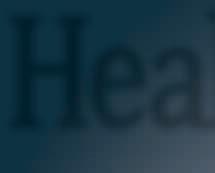















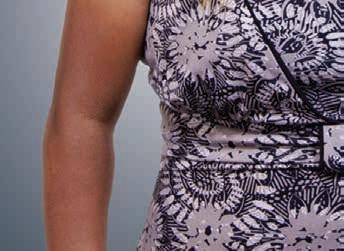

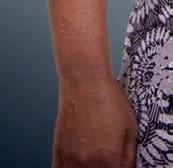

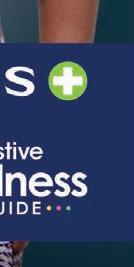






















SUMMER 2022 WWW.BUSINESSMEDIAMAGS.CO.ZA HOME SOUTH AFRICAN INFORMED INNOVATIVE INSPIRED OWNER WELCOME HOME WWW.SAHOMEOWNER.CO.ZA KIDS WELLNESS – WHAT EVERY PARENT NEEDS TO KNOW ABOUT FASD, MEASLES, BLOOD PRESSURE, MENTAL WELLNESS CHECKS, AND MORE INSIDE: Desiree Ellis EYE CARE Choosing the right pair of sunglasses ORAL HYGIENE Gum disease, weight and probiotic s FITNESS Why cycling is good for you Turn to page 6 Training her mind, body and soul



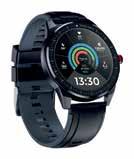
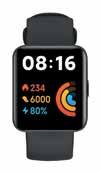



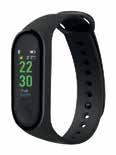





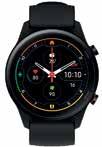





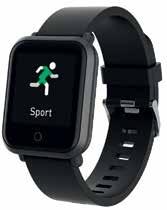




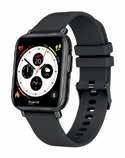
‘Tis the most memorable time of the year! #ShareFestiveMoments All prices in South African Rands. Terms and Conditions Apply. makro.co.za Save money. Live better. MKNTGM347_49/2022 Makro DTP NA/TM 1 Promotion valid from Sunday 4 December to Saturday 24 December 2022 Full Touch Watch • Bluetooth 5.0 • 24 hour heart rate (428957) each 899 Watch 2 Lite (436549) each 1299 Single Touch Active Watch PA58 (389904) each 449 Heartbeat Series Fitness Band • Model: RK-5067-BK (400098) each 199 Square Fitness Watch (429139) each 399 Bluetooth Calling Watch • Model: PA89 • Bluetooth 5.0 + 3.0 (428979) each 999 Smart Watch (441882) each 2299 Smart Band 6 (428996) each 949 MAKE FITNESS A HABIT Active Smart Watch and TWS Earphone Bundle (451050) per bundle 899 each 1299 Fit Sports Watch • Bluetooth 5.0 + 3.0 • Bluetooth calling (446144) Health Square Watch PA87BLK (428949) each 699








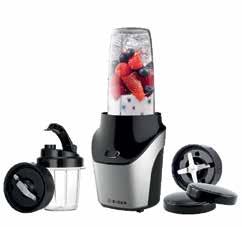

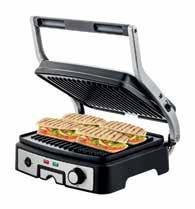


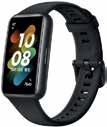

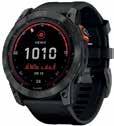
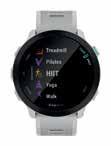




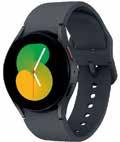
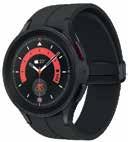
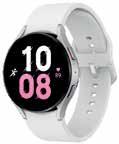



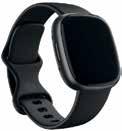
HOMEWARE FOR A HEALTHIER KITCHEN *To earn mRewards download and register on the mCard app. Subject to a stated limitation, Makro will have sufficient stock to meet anticipated demand. Stock of all goods on offer is limited. Makro will ensure that they have sufficient stock to meet anticipated demand. Makro shall use its reasonable efforts to discontinue the offer as soon as stock is no longer available. If we run out of stock of goods on offer, we will attempt to obtain reserve stock or offer you a reasonable and comparable alternative with the same product specifications but without guaranteeing the discount/offer to the alternative product. If a mistake occurs in an advertisement or incomplete information is printed, we will display a notice in-store with all the correct details. For bulk packs, any advertised price per unit will only apply if you buy the bulk pack. Prices exclude accessories used for display purposes and include 15% VAT. If we offer the product individually as well, another price will apply to the individual product, as per the advertisement. Massmart Financial Services (Pty) Ltd is an Authorised Financial Services Provider (FSP License No. 49726) underwritten by Mutual & Federal Risk Financing. Makro Credit disclaimer: **Monthly instalment includes card fees, customer protection insurance and interest at 20.25%.***Total Repayment includes card fees, customer protection insurance and interest at 20.25%. ****Interest Rates are subject to change. All prices are indicative and actual repayments may vary based on account activity. Fees subject to change based on customer risk profile. Repayment options: Revolving, 24-month budget and 36-month budget. Powered by RCS, a registered Credit and authorised Financial Services Provider. NCRCP 38/FSP 44481. CUSTOMER SERVICE: 0860 300 999 | ONLINE SUPPORT: 0860 600 999 | MCARD SUPPORT: 0860 309 999 Download the Makro mCard app or apply online to receive your own Makro card. SMS "makro card" to 31144 | For store details visit www.makro.co.za 2 MKNTGM347 49/2022 Makro DTP NA/TM_Promotion valid from Sunday 4 December to Saturday 24 December 2022 650 ml Stainless Steel Double Wall Vacuum Sports Bottle (437188; 437190; 437198; 437202) each 199 Nutri Blender • Food shown for display purposes only (435660) each 899 each 899 Vitalic Stainless Steel Health Grill • Food shown for display purposes only (435620) Charge 5 Black/Graphite Stainless Steel (429892) each 3999 Band 7 (450186) each 1699 Fenix 7X (435071) each 17999 Forerunner 55 (425600) each 3999 FREE DELIVERY ON ALL PREMIUM WATCHES ONLINE MAKRO.CO.ZA Venu SQ 2 (450202) each 4999 Forerunner 245 Music (444826) each 5999 each 3299 Watch Fit 2 (450200) Galaxy Watch 5 40 mm • Model: SM-R900NZAAXFA (445411) each 5999 Galaxy Watch 5 Pro 45 mm • Model: SM-R920NZTAXFA (445394) each 11999 Galaxy Watch 5 40 mm • Model: SM-R910NZSAXFA (445218) each 6499 Fenix 6S (385094) each 10999 Vortex Personal Blender 350 (451122) each 299 SAVE 250 Black/Graphite Smart Watch (453198) each 6299


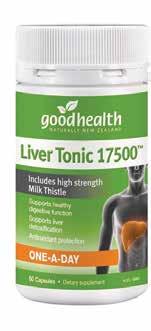
Please note complementary health products do not replace a healthy lifestyle or claim to cure or treat any disease(s). Add these products to your overall healthy lifestyle for optimal benefits Available at: Clicks Stores, Health Shops, Pharmacies & Wellness Warehouses throughout South Africa www.wellnesswarehouse.com I www.faithfultonature.co.za I www.ingoodhealth.co.za I www.clicks.co.za Good Health Products (021) 701 5000 I ghpoffice@iafrica.com Liver Tonic 17500TM combines the potent liver protecting and cleansing herb, Milk Thistle, with a comprehensive blend of herbs and nutrients to create an effective liver tonic. Key antioxidants help protect the body from liver damage and support the regeneration of liver cells. Optimal liver function is essential for the maintenance of general wellbeing. Liver Tonic + antioxidants - protects liver and improves healthy digestive function Key Benefits • More energy • Rejuvenating after indulgences • Rejuvenating after stressful periods • Supportive of fast paced lifestyles • Anti-oxidant protection • Enhances well-being • Enhances digestion and elimination • Combines well with Good Health Multi Fibre Key Features • Milk Thistle and high potency herbs • One-a-day formula for a busy life • Supports vital liver function • Supports the gall bladder • Protects against free radicals • Supports cholesterol reduction • Rejuvenates the liver Key Indications • Daily liver detoxification for hangover prevention • Digestive complaints – constipation, diarrhoea, wind, and bloating • Allergy sufferers • Joint pain • General lack of energy, and headaches • Skin problems – acne Antioxidant Vegan Liver Tonic Healthy digestion Improve Regenerate Live(r)
PUBLISHED BY
Picasso Headline, A proud division of Arena Holdings (Pty) Ltd Hill on Empire, 16 Empire Road (cnr Hillside Road), Parktown, Johannesburg, 2193 PO Box 12500, Mill Street, Cape Town, 8010 www.businessmediamags.co.za

EDITORIAL
Content Manager: Raina Julies rainaj@picasso.co.za
Contributors: Jermaine Craig, Sue-Ellen Donough, Caryn Gootkin, Murray Hewlett, Glynis Horning, Nia Magoulianiti-McGregor, Mbali Mapholi, Itumeleng Mogaki, Rodney Weidemann

Copy Editor: Brenda Bryden
Content Co-ordinator: Vanessa Payne
Digital Editor: Stacey Visser vissers@businessmediamags.co.za
DESIGN
Head of Design: Jayne Macé-Ferguson
Senior Designer: Mfundo Archie Ndzo, Advert Designer: Bulelwa Sotashe Cover: Supplied
SALES
Project Manager: Arnold Cruywagen arnoldc@picasso.co.za | +27 21 469 2508
Sales People: Mark Geyer, Merryl Klein, Gavin Payne
PRODUCTION
Production Editor: Shamiela Brenner
Advertising Co-ordinator: Johan Labuschagne Subscriptions and Distribution: Fatima Dramat, fatamid@picasso.co.za
Printer: CTP Printers, Cape Town
MANAGEMENT
Management Accountant: Deidre Musha Business Manager: Lodewyk van der Walt General Manager, Magazines: Jocelyne Bayer
SUMMERTIME and the living should be easy
this time of year in South Africa, everyone can be found outdoors. The beaches and poolsides are packed, and the happiness endorphins are in full effect. But while our attitudes may seem relaxed, our health and that of our children remains top of mind. Summertime brings myriad seasonal challenges, but our experts share that those pesky all-year-round health problems don’t go away just because the sun is out.
We asked our experts to share what parents need to know about a host of health and hygiene-related issues affecting children. We take a deep dive into childhood hypertension and how, if not flagged and treated, it could lead to lifelong health problems. We look at how alcohol consumption during pregnancy can negatively impact your baby’s development, and the correlation between your child’s weight and dental health.
For those of you taking up new fitness regimes, we ask our specialists for advice about choosing the best running shoe fit and why cycling is South Africa’s most popular pastime. Desiree Ellis and Maps Maponyane share how to stay fit and how to slow down when needed.






Raina Julies

contents
COVER STORY
10 Desiree Ellis shares the challenges of keeping and staying healthy on and off the field.

PROFILE
11 Maps Maponyane shares how, in the most manic times, he has learned to slow it all down.
KIDS WELLNESS
12 We live in an age where children and teenagers face myriad challenges that have the potential to impact their mental health. We ask our experts about the parental dos and don’ts.
ORAL HEALTH

20 What you need to know about gum disease; and the correlation between your kids’ weight and their dental health.
EYE CARE
22 We may take it for granted, but choosing the correct sunglasses that fit the shape of our faces is essential; and questions to ask your eye doctor.
FITNESS
24 Expert fitness advice; the benefits of cycling; how to choose the right running shoes; and advice for the best healthy snacking this summertime.
Disclaimer:
While every effort has been made to ensure that the information in this publication is sound, it is expressly not designed to diagnose or treat a medical condition or health problem. The information does not constitute medical advice. It is also subject to personal interpretation and may become dated or obsolete. The publisher, editor, authors and their employees or agents, therefore, cannot accept responsibility for the information in this publication or for any errors, omissions or inaccuracies contained therein, whether arising from negligence or otherwise. They are therefore not liable for any direct or indirect effects of the information lease ons lt a ali ed health are pra titioner regarding any medical or health issues.

Copyright: No portion of this magazine may be reproduced in any form without written consent of the publisher. The publisher is not responsible for unsolicited material. Healthy Times is published by Picasso Headline. The opinions expressed are not necessarily those of Picasso Headline. All advertisements/advertorials have been paid for and therefore do not carry any endorsement by the publisher.
14 Measles is not just a matter of flu-style symptoms and a temperature – it can be life-threatening.
15 Foetal alcohol spectrum disorder causes lifelong physical and mental problems, and South Africa has the highest reported rate worldwide. Our experts share what you need to know.
16 Familiarising yourself with the terms hypertension and hypotension could help prevent your child from suffering in adulthood.
17 Keep your kids safe when they’re enjoying outdoor activities.
EDITORIAL COMMENT HEALTHY TIMES l 3
20 12 24
Sunscreen: YOUR SUMMER GUIDE
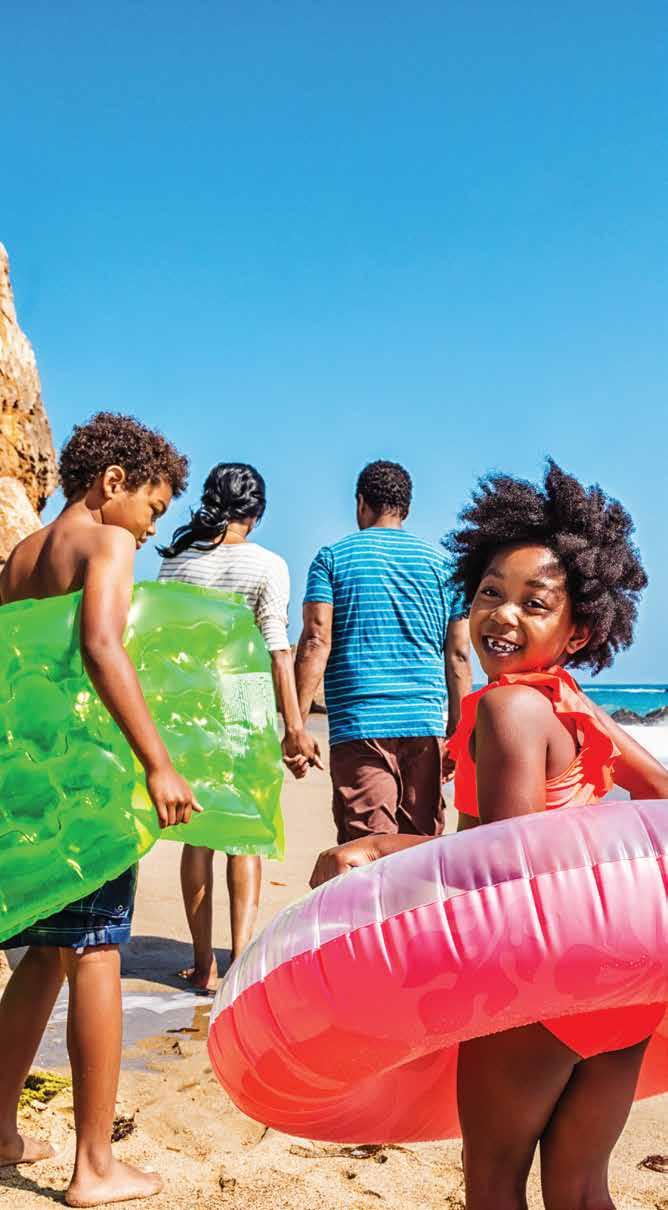
HOW DOES SUNSCREEN PROTECT YOUR SKIN?
There are two types, which have different ways of protecting your skin:
Physical sunscreen
Also known as ‘mineral’ or ‘barrier’ sunscreens, this type creates a mineral layer on the surface of the skin to block UV rays.


It offers immediate protection, and is less likely to irritate skin.


Best for: sensitive skins and allergies.







Chemical sunscreen






Chemical ingredients are included to penetrate the skin.
Through a chemical reaction, they absorb, then release or scatter harmful UV rays back into the environment.
Chemical sunscreens are usually less oily and more easily applied.
These take 20-30 minutes to become effective, so be sure to apply well before sun exposure.
Best for: exercise or water sports.
sure you enjoy your time in the sun safely this summer.
Make
WHAT DOES SPF MEAN?













SPF means ‘sun protection factor’. The SPF number gives you a sense of how long your skin would take to burn when using the product exactly as directed versus without any sunscreen. For example, with SPF 50, it would take 50 times longer to burn than if you weren’t wearing sunscreen.
9 sun safe tips




FROM A SKIN EXPERT

Cape Town-based dermatologist Dr Dilshaad Asmal says:




















1. Wear sunscreen every day, even if it is cloudy – UV rays can penetrate clouds.


2. Make sure your sunscreen protects against both UVA and UVB rays (this is sometimes known as ‘broad spectrum’).



3. If you’re spending time outdoors, wear a wide-brimmed hat and stay in the shade when possible.
4. Wear a UPF (Ultraviolet Protection Factor) swimsuit, and use waterresistant sunscreen
if you’re going to be swimming.

5. Don’t forget your lips when applying sunscreen.
6. Limit sun exposure (or avoid it altogether) between 10am and 3pm, when UV rays are harshest.





7. Stay hydrated.
8. Wear sunglasses with a UV protection rating of UV400.




9. Visit a dermatologist annually for a checkup, particularly if you’ve spent a lot of time outdoors over the years, and/or if you have moles on your skin.
Clicks SUNprotect

Anti-Ageing Face Cream SPF 50, 50ml 11000
Island Tribe Anti-Ageing Face Cream SPF 50, 50ml 10500

Everysun Anti-Age Face Cream SPF 50, 50ml 12200





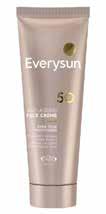

3for2 on selected Sun care products




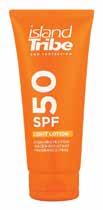
Clicks SUNprotect SPF30 Lotion 12900

Clicks SUNprotect Kids Night Lotion Spray SPF 50, 100ml 9999



Everysun Sunscreen Lotion SPF 30, 100ml 9399

Avène SPF50+ Mineral Cream, 50ml 20650
Eucerin Actinic Control Sun Cream SPF100, 80ml 50000
Nivea Sun Q10 AntiAge Face Cream SPF 50, 50ml 15500
festive
Scan the QR code to read more here.
3for2
OMG!







Registered dietitians share their best advice.



TO PREVENT FESTIVE OVERINDULGENCE
Family gatherings, office parties and endless amounts of tasty food – even for the most disciplined among us, consuming too much of our favourite treats and drinks is all too easy at this time of year. Here are top tips from registered dietitians for avoiding overindulgence...

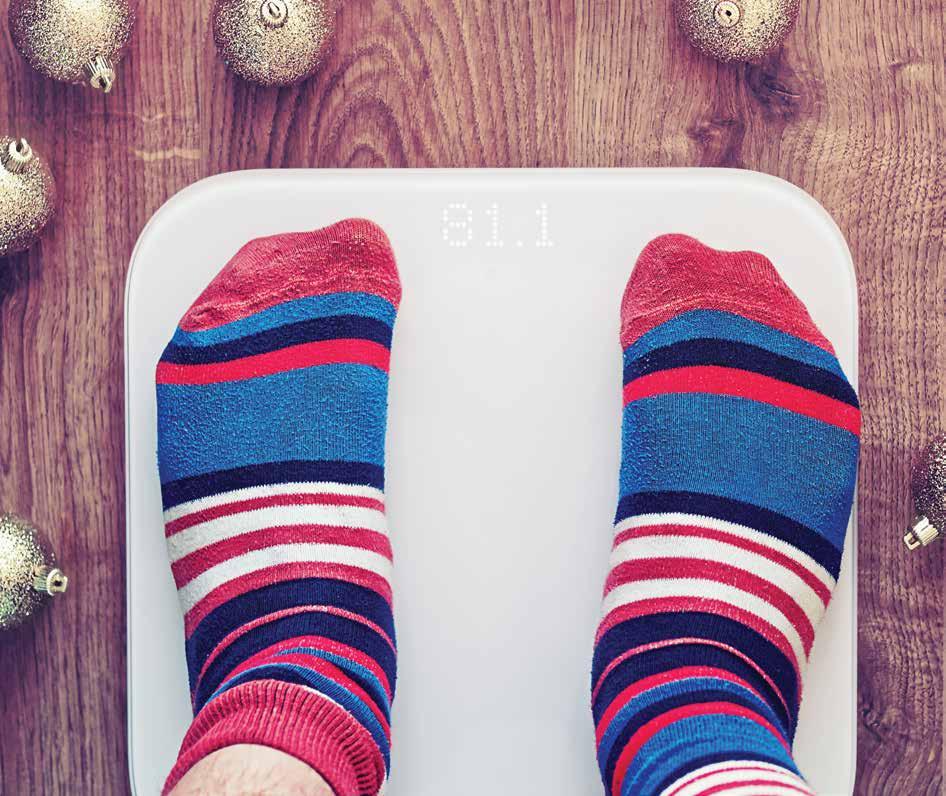
CHOOSE YOUR DRINKS WISELY


When it’s time to raise a glass in celebration, reach for low-alcohol options and avoid high-sugar mixers, advises dietitian Toni Brien. These include light beer or gin with a sugar-free tonic. Or make a wine spritzer with half wine and half sparkling water.
“Be sure to drink enough water; it is always the best option. You can add some lemon slices or even water flavour drops,” she adds.

1 tips
2 SLOWLY, SLOWLY…





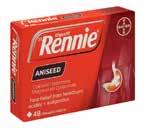


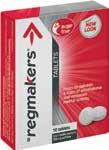




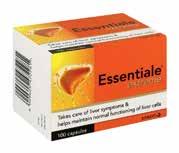



















Instead of diving straight in, take a moment. Serve yourself a modest portion and then wait 20 minutes before going back for more. “It takes 20 minutes for the brain to register that the stomach is full,” explains dietitian Shani Cohen. “Take the time to choose the food you really want to eat and then actively focus on enjoying each bite’s smell, taste, and texture. This will naturally help you slow down and stop when you are full.”
DON’T FORGET YOUR VEGGIES
Cohen suggests aiming to fill half your plate with vegetables at lunch and dinner. “Vegetables provide a great amount of fibre, water, vitamins and minerals that help to keep us feeling fuller for longer and to boost our immune systems.”
EAT IN BEFORE YOU GO OUT
Avoid going to gatherings feeling hungry. “Instead, try to eat a filling meal or healthy snack before you head out. That way, you aren’t tempted to overeat,” says Brien. Plus, you can spend more time mingling and less time worrying about your stomach.

KEEP IT LIGHT

Indigestion, stomach pain, and cramping – big holiday meals can wreak havoc on your digestive system. So instead, eat light meals throughout the day. “You might also choose two starters instead of a heavier main dish, or a starter and a light main and skip dessert,” says Brien. “Since it’s easy to overeat when one is not paying attention, use a smaller plate and have smaller servings to help control your intake.”
Scan the QR code to read more here.

festive
3
4 5 Clicks Vitamin B shot, berry, 60ml 25
Extreme capsules,
tablets, 10
Plus Milk Thistle capsules, 100
2moro2nite Hangover & Heartburn support, 3 sachets 4299 Aniseed 48 Tablets 5999 Herbal Antacid Gaviscon Plus Liquid Peppermint 300ml 18000
Essentiale
100 19200 Regmakers
3899
31900
Do you experience a runny nose, sneezing, and itchy eyes in the summer? You are not alone. According to the Allergy Foundation, allergies affect a third of South Africans. Forty percent of sufferers are children, with eczema, asthma, and allergic rhinitis (hay fever) being the most frequent allergic conditions.
allergies DON’T LET SPOIL YOUR



FESTIVE HOLIDAY
Take action to avoid sneezing and wheezing through the celebrations.
COMMON SUMMER ALLERGY TRIGGERS:




Pollen


Grasses and tree pollens are the chief culprits. In the Cape, grass pollen season runs from September to March. On the Highveld, it lasts up to 10 months of the year.

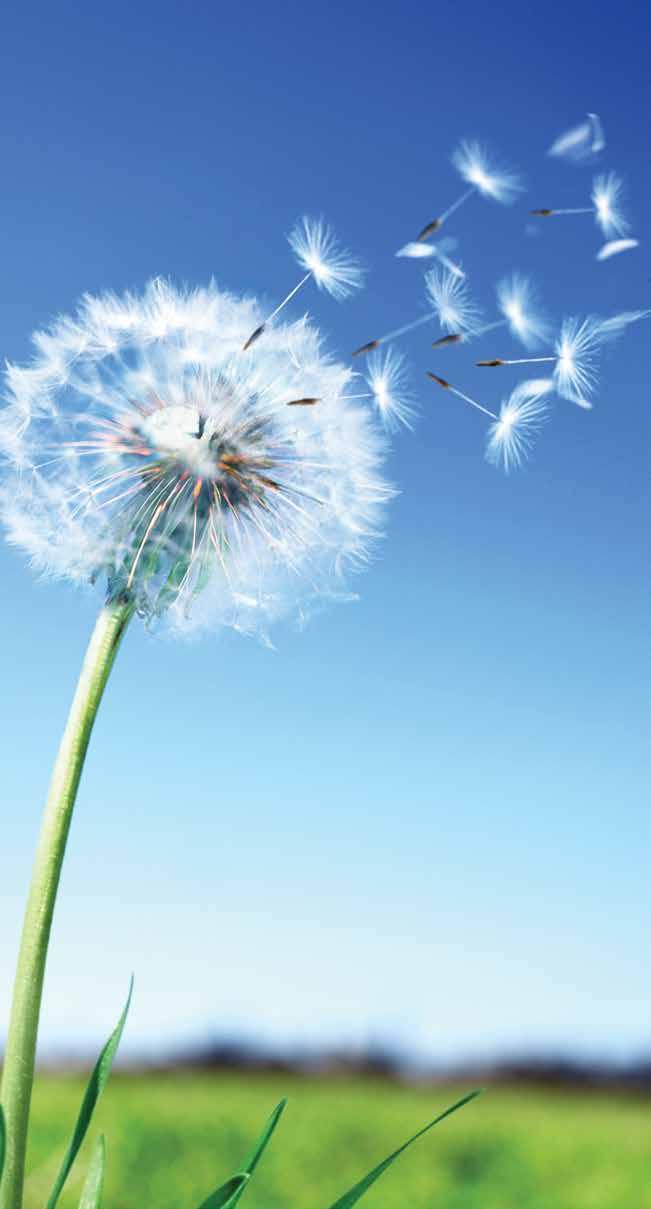
Mould
Although mould is an all-year allergen, it can peak in summer thanks to higher humidity.


Insects
The waste produced by some household insects –particularly dust mites and cockroaches – contains enzymes that can trigger allergies throughout the year but which peak in summer.
7
WAYS TO PREVENT SUMMER ALLERGIES













1. Wash your hair. Pollen can stick to your hair and then transfer to other surfaces in your home.

2. Change your sheets. Bed linen should also be washed regularly to reduce both dust mite waste and outdoor allergens that have found their way in.















3. Hang laundry inside. If pollen is your trigger, this reduces your exposure.

4. Check for damp. It’s important to keep an eye out for leaks, condensation,
and other sources of moisture around the home to avoid problems like mould and insect infestations.
5. Keep indoor temperatures low. Insects and dust mites are attracted to warmer temperatures, so it can help to keep your home cool.
6. Keep windows shut. Reduce your pollen exposure by keeping your house and car windows closed.
7. Wear a mask. When the pollen count is high, this can help outdoors.
Clicks Saline Nasal Isotonic Spray, 100ml 18200

Rhinimet Unicorn nasal spray 8999
Clarex Unicorn 5mg tablets, 30 14900
Fenofex Unicorn 180mg tablets, 10 7999
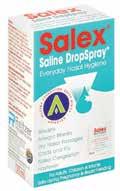
Clicks Lorfast Loratadine 10mg 6499 Salex Saline DropSpray, 30ml 8999
A Vogel Sinuforce tablets, 120 23900
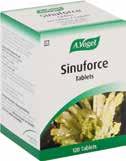
festive


A Vogel Sinuforce drops, 30ml 11900
Stérimar Stop & Protect, 20ml, from13800
from
Scan the QR code to read more here.
Coping pressurewithand KEEPING FIT


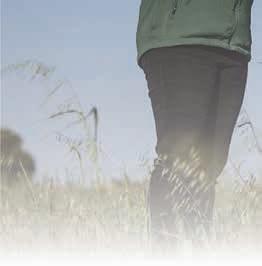
Desiree Ellis has played for and captained her country to international success. Now, as head coach of Banyana Banyana she requires a different level of mental and physical fitness She spoke to Jermaine Craig
desiree Ellis is unassuming and unfussy, so unsurprisingly, she keeps it simple when it comes to her diet and overall wellbeing.
For Ellis, an egg a day and a good strong cup of coffee generally keep the doctor away. However, she loves nothing more than to unwind and enjoy time with her loved ones over a good meaty braai. She is no longer a professional athlete, and her gruelling work schedule means that her tness ro tine has ta en a ba seat, ho ever, she still advo ates for keeping active and busy.
“I used to train every day during my playing days, but that’s not the case rrentl still strive to do ever thing an to sta t and eat as healthil as possible. I train twice or thrice a week now, alternating between 45-minute walks and strength training, and I try my utmost to get in my 10 000 steps daily,” says Ellis.
Her high-pressured job is demanding, but she relies on a close inner circle to help her cope with the challenges of coaching the national team.

ta ing mentall t is hallenging and to gh there is plent of s r tin from everyone – that comes with the job. Fortunately, I am surrounded by a good group of people, and I touch base with other coaches often, which helps. I also read a lot and m faith is strong od listens hen o spea famil and lose friends are always there for me, which, over the last couple of years, has helped me to manage the controllables when things don’t always go well,” Ellis explains.
Talking of family and friends, Ellis says that her parents are her greatest role models. “They taught me the values and ethics that I still live by,” she says. She lists others, such as Fran Hilton Smith (former SAFA technical director), Nomsa ahlang niversit of ohannesb rg sport dire tor , and lhaam roene ald niversit of tellenbos h sport dire tor , as among her role models era a is a oa h loo p to she has ta ght me a lot, as has a i hipanga, oa h of amibia, and then there’s itso osimane, ho has done ama ing things for o th African football. Shilene Booysen (South Sudan coach) is someone I am very close to e hat reg larl , llis sa s hoes oshoe is another big role model, and as a long s ffering an hester nited fan, also admire r an obson, an iggs and Sir Alex Ferguson, particularly the way he could rebuild teams.”
“Staying mentally fit is challenging and tough; there is plenty of scrutiny from everyone – that comes with the job.”
BEHIND THE SCENES WITH DESIREE ELLIS
What is your wake-up routine and what do you have for breakfast? The first thing I do when I wake up is pray and express my gratitude that I am alive. I love my breakfast berries and porridge. Sometimes I’ll have a poached or fried egg or a sandwich with some coffee. I also like Future Life or Herbalife shakes, but I’m not too pedantic about breakfast.
Favourite meal and go-to health snack?
My favourite meal is a braai. I also love everything chicken and my mom’s curry. My go-to health snack is a Herbalife snack bar. A new thing I’m enjoying is the Simple Truth range from Checkers, they have these pretzels, which my sister says are horrible, but I love them. They also have healthy mango fruit rolls and berry “wine gums”. I also drink lots of water. My biggest challenge is soft drinks, which I don’t drink often, but when I am on holiday, Coke is my go-to!
Favourite summertime activity?
I enjoy going for long drives and stopping at a restaurant to eat. I also love visiting family with a pool in the yard and having a braai. In December and January, if the football calendar allows, I try to go home to Cape Town to spend time with family and friends and recharge the batteries.
What would people be surprised to learn about you?
That I can’t swim. I would have loved to, but I’ve never learnt how.
10 l HEALTHY TIMES
Image: supplied
COVER STORY
Desiree Ellis
Mind MAPPING
In the most manic times, media personality and TV presenter Maps Maponyane has learned how to slow it down.
By Nia Magoulianiti-McGregor
when life’s rollercoaster picks up speed to dizzying highs, Maps Maponyane, media personality, actor, style ninja, and eco-warrior, remains zen. When, on occasion, it slows down to a mild sputter or takes a deep dive south, Maponyane acknowledges the change of pace and remains zen. Between interviewing super successful personalities on DStv’s Mzansi Icons, travelling to London, Dubai, and Iceland, being on set at the crack of dawn, doing roadtripping for board meetings, or “with a heavy heart”, closing his restaurant Buns Out in Linden, Johannesburg, Maponyane finds time to breathe. “It’s a manic time,” he says. Yet he remains calm and even fatalistic. “Life has so many surprises, you can’t plan anything to a T. There are going to be disappointing moments or mundane times. You have to be open to change, be positive, and know that the only thing you’re in charge of is your reaction.”
He says being a pensive child who “suffered from stress and low self-esteem”, he overcame a stutter, school bullying, and “acting out”. He has learned to step back, assess the situation and “quietly chip away at what needs to be done”.
“I’m good at regrouping and at getting on with things. I’m straightforward, and I don’t stress intensely.”


But when necessary, he says, “there’s a way I work through it. I become present in the moment. I sip my cup of coffee slowly. I note my surroundings. Even smiling helps. I never allow myself to feel overwhelmed. When I’m under strain, I talk and walk slower. I’m deliberate in my every action. I take a breath through to that next step. It helps to bring it all down a notch.”
A REALISTIC OPTIMIST
Maponyane is what he calls a “realistic optimist” – managing expectations without taking away from the joy and pleasure of dreaming big. Joy comes in various forms for him. “I make yum noises when I eat. I love food – eating is a beautiful, sensual experience. I try not to overindulge, so I stay in touch with my body.”
Then there was the joy of being in Iceland to promote water conservation awareness and discovering water untouched by humankind. “I was speechless. It was magical. It was a moment I can refer to as feeling really happy.”
Maponyane’s famous footballer father, Marks Maponyane, is “even in his 60s, one of the fittest people I know. He’s taught me to always make time for exercise – otherwise, it’s easy to get into a negative cycle”.
But thanks to all his travelling and work commitments, physical exercise can be a hit-and-miss affair for Maponyane. “I jog or go for a walk whenever I can. I’m aware of how important it is, not least for mental health. Your dopamine levels are sustained for up to three hours after a gym workout.”

Mental health has come up in his Mzansi Icons interviews too. Maponyane says he was surprised at how many were open to discussing raw moments, struggles with depression, and even suicide attempts. “This is breaking down barriers in a time when there is still a stigma – especially for men –when it comes to mental health space. It’s still considered weakness.”


He says a survey of young people in townships showed that they went to Google for advice when they need emotional help. “They didn’t go to their parents or counsellors; they went to Google! There are few safe spaces for young people in townships.
“I suppose if I had to interview myself, I would ask: ‘Are you really happy?’ And the answer would be: ‘I don’t always feel happy, but I’m always grateful, and I’ve realised how powerful and helpful gratitude has been in keeping my happiness more consistent and sustainable’.”
Happiness and healthy living is a journey – it’s a work in progress, he says. “It’s about the courage to dream and working towards those dreams. It’s about looking people in the eye, connecting and engaging, about taking peaceful moments. I think there’s also something about believing in where life is taking you. Truly believing.”
HEALTHY TIMES l 11 PROFILE
Image: Portrait image: supplied
“You have to be open to change, be positive, and know that the only thing you’re in charge of is your reaction.”
Maps Maponyane
MENTAL HEALTH: It’s vital to recognise the warning signs
We live in an age where children and teenagers face myriad challenges that have the potential to impact their mental health.
RodneyWeidemann investigates the parental dos and don’ts

today’s youth face many challenges relating to body image, peer pressure, and societal conformity, to name a few. With everything from weight challenges to gender identity issues, and cyberbullying and pressure to succeed academically, as well as general stress and fatigue, is it any wonder that many of our youths struggle with their mental health at times?
Simone Raaths, a specialist wellness counsellor with an honours degree in psychology, notes that one of the first warning signs that children and teenagers are struggling with mental health issues is a drastic change in their grades or school performance.

“Their grades may drop drastically, or they may show little to no interest or motivation to do their schoolwork or assignments. They may even begin skipping school. It is also possible that their grades increase drastically; while this doesn’t sound bad, it can indicate an intense need to gain approval or attention,” she says.
“Another warning sign to look out for is changes in their social life. Teenagers are at an age where their peers are a very important part of their lives. If they withdraw from friends or seem very isolated, it is a red flag. This can also include isolating and withdrawing from family.”
Raaths adds that another warning sign may be changes in a teenager’s appetite. This can include eating more than usual –basically stress or emotional eating – or eating far less. Another common sign is if they lose interest in things/hobbies they previously enjoyed.

“Other signs to be aware of include muscle tension, stomach aches or headaches, nausea, extreme irritability, and mood swings. A lack of concentration on a task, a lack of motivation, and restless, on-edge












behaviour are also signs. Most parents know their children, their temperaments, and their personalities, so if these appear different, it should be noted.
“If the teenager is showing an interest in dark themes, such as a preoccupation with death-related subjects, or seems to have a very dark or negative mindset about the world or themselves, it should be seen as a large red flag. They may also demonstrate signs of possible self-harm, such as dressing in long-sleeved clothes in summer, or refusing to expose their arms or legs. If you recognise these signs, you should definitely be consulting a mental health professional,” adds Raaths.
WHAT PARENTS SHOULD DO
According to clinical psychologist Audrey Katsidzira, parents who assess their children as suggested above, should also seek to put the behaviour into context. In other words, talk to their teachers and other close family members about any changes or irregularities observed –this will help you determine whether professional help is required.
“My advice for parents is to be active listeners. If your child talks to you about an iss e, listen to hat the sa and give them af rmation that you have heard. Don’t simply dismiss their concerns or be vag e ith o r af rmation t’s ltimatel abo t learl understanding what they say, and ensuring they recognise that you do understand,” she says.
“For example, if your child has issues with gender identity and they open up to you – even if this is against your personal beliefs – make a point of listening and trying to understand. Remember, by opening up, they are seeking your support.
12 l HEALTHY TIMES KIDS’ WELLNESS
Simone Raaths
Audrey Katsidzira
Once your child is happy that you are listening, you can then recommend going to see a spe ialist, b t don’t st hoose the nearest one rather nd a pra titioner ho has experien e in the spe i hallenge o r hild is fa ing it’s important to do o r resear h rst
Adolescent psychiatrist Dr Terri Henderson points out that if o r hild or teen indi ates that the are not , o absol tel m st listen to them, instead of simpl br shing their on erns aside emonstrate on ern and as ho o an help them lso, if a tea her raises on erns to o as a parent, this o ld be a red ag and means o sho ld tal to o r hild he rst thing to do is be honest ith them o, o may say to them that you have noticed that they are doing things differentl , and o are orried the ma not be feeling so good hen as them ho o an help them et them no that if the ant to tal , o are there for them, b t if the o ld rather tal to someone else, tell them o ill help them nd the right professional to spea to, she s ggests eens, she notes, ill ite often leap at s h an opport nit , simpl be a se o made the rst overt re oo often, parents tend to tip toe aro nd s h iss es, b t it is al a s better to as

SAY THE RIGHT THINGS
If your child has expressed that they are having a bad day, not feeling okay, or feeling down or worried, here’s what to do.
SAY: ill be here to support you might not kno e actly ho you are feeling but am here for you.” care about you and ant to help you hat can do today to help you?” m sorry that you are going through this ant to help you ou are not alone.” o can better support you today am sure this feels scary and over helming am here and ant to help you.”
DON’T SAY: hink positively Pull yourself to ards yourself and get on ith it ust get over it on t think about it nap out of it t s all in your mind o some e ercise and you ill feel better ut you everything to be grateful for here are other people with far less.”
Source: SA Depression and Anxiety Group
FUN ACTIVITIES
Cristine Scolari, a psychologist at the Seriti Therapy & Assessment Centre, explains that other things parents can do to help their child or teenager who may be struggling include sticking to daily routines, especially with younger children, as this provides structure and a sense of security and safety in a child’s world.
“Ensuring that fun family activities occur regularly is also important, whether it is a ‘movie and popcorn night’, a picnic in the garden, or a boardgame evening. Allow older children and adolescents the space to voice their opinions, thoughts, and feelings,” she advises.
“It is critical to remember that if a youngster verbalises a wish to die, and if the apparent symptoms are not improving or ‘going away’, then it is vital that you enlist the help of a mental health professional.”
Simone Raaths, a specialist wellness counsellor, stresses that if your teenager is displaying any warning signs, it is not a phase or something they will eventually get over.
“There is a difference between going through the changes of being a teenager and struggling with mental health. Rather be proactive. If you feel it is beyond your capabilities as a parent, that’s okay. This is why mental health professionals are there, to support you and your teenager,” she concludes.
REACTI O NS TO SPECIFIC CHALLENGES

Specialist wellness counsellor Simone Raaths indicates that, while the general warning signs are broadly similar, whatever the nature of the child’s issue, each is a unique human being going through their own personal challenges.
“For example, with a gender identity struggle, a teenager might start to dress differently, withdraw from friends and family, or express negative thoughts about themselves,” she notes.
“Meanwhile, a scenario involving online bullying could see them become very irritable or have extreme mood swings, withdraw from social activities, experience changes in sleep or appetite, or seem very down or upset when they are on social media. A negative self-image
also be an indicator.”
On the other hand, she adds, in the example of school pressure, a teenager might show signs of sleep pattern or appetite changes, or display anxiety over marks and performance, or hold a negative view of themselves academically.
HEALTHY TIMES l 13 Images: iStock.com/ bunditinay, istock.com/ jacoblund, Portrait image: supplied
“My advice for parents is to be active listeners. If your child talks to you about an issue, listen to what they say and give them affirmation that you have heard.” – Audrey Katsidzira
can
r erri enderson
hat parents need to kno



ABOUT MEASLES
once a common childhood infection, measles has been largely eradicated since the introduction of the vaccine in South Africa in the 1990s. But during the COVID-19 pandemic, some children did not have the routine shots as part of the government’s Expanded Programme on Immunisation (EPI). And this year, there have been several small measles outbreaks in Gauteng.
While the Gauteng Department of Health has conducted a vaccination campaign in the areas since then, Dr Kerrigan McCarthy, a pathologist in the Centre for Vaccines and Immunology at the National Institute for Communicable Diseases, told online publication Spotlight this year that “we are sitting on the cusp of a very large measles outbreak”.


















It is imperative to check that your child is up to date with their inoculations: either the MeasBio (Biovac) vaccine given at six months with a booster at 12 months, free at public health facilities as part of the EPI; or the equally safe and effective measles-mumps-rubella (MMR) vaccine, available in private sector clinics, says Gauteng paediatrician Dr Deseré Ferreira.










WHAT YOU NEED TO KNOW

1easles is not simply u ith a rash , as some parents may tell you. Symptoms include a high fever (spiking to more than 40 º C), runny nose, persistent cough, and watery red eyes (conjunctivitis). Three to five days after these symptoms begin, the distinctive rash appears: small red spots, some lightly raised, in clusters, giving a splotchy red appearance.
Koplik’s spots can also develop inside the mouth in the cheek lining: small white spots on a red background. “They are often missed as they appear towards the end of the prodromal phase (before the characteristic symptoms occur), and are present for a short time,” says Vredenburg paediatrician Dr Susan Annandale.



2Measles

can be deadly, warn both doctors. UNICEF reports that it still kills more than 200 000 people a year, mostly children. The US Centers for Disease Control (CDC) estimates that 1 to 3 out of 1 000 people who get measles will die, even with the best care. Complications can include dehydration from vomiting and diarrhoea; mouth ulcers; bacterial ear infection; bronchiolitis, laryngitis or croup; viral pne monia infe tion of the l ngs and en ephalitis in ammation of the brain , which can cause permanent brain damage, warns Dr Annandale.



3


easles is highly contagious “It’s airborne and is spread by respiratory droplets during breathing, coughing or sneezing, and direct contact with infected secretions,” she says. It’s so contagious, notes the CDC, that “if one person has it, up to 9 out of 10 people around them will become infected if they haven’t been vaccinated. Your child can get measles just by being in a room where a person with measles has been, even up to two hours after that person has left”. An infected person can spread the infection even before they know they have it, from four days before the rash develops to four days afterwards.


4
easles is a notifiable infection If you suspect your child has it, alert your GP, who can report it for contact tracing, and keep your child isolated. Give them plenty of liquid to drink and bed rest. Beyond that, symptoms are usually treated symptomatically with paracetamol or ibuprofen to relieve fever – don’t give children under 16 aspirin. “Vitamin A should be administered orally to all children with suspected measles,” says Dr Annandale. “It may decrease the severity of complications.” Gently remove crusts from the child’s eyes with cotton wool soaked in warm water, says Dr Ferreira. “If your child starts coughing or gets worse in any way, see your doctor as soon as possible to treat the secondary infection.”
5 t s never too late to vaccinate If your child has not been inoculated against measles, it can be done at any age – adults can also have the vaccine. Speak to your health professional or pharmacy clinic.
14 l HEALTHY TIMES KIDS’ HEALTH
Image: iStock.com/ Inside Creative House, Portrait images: supplied
easles is not ust a matter of u style symptoms and a high temp it can e life threatening ealth experts are arning of a potential ma or out rea rites
Glynis Horning
Measles is a notifiable infection. If you suspect your child has it, alert your GP, who can report it for contact tracing, and keep your child isolated.
eser erreira
r usan
nnandale
FIGHTING
FASD
when you drink during pregnancy, alcohol passes directly through the placenta and umbilical cord into the bloodstream of your developing child –essentially, when you drink, they drink. And alcohol permanently damages the developing brain, causing developmental delays and irreversible learning and behavioural problems that can affect them all their lives.
There is no safe minimum amount of alcohol or type – just a few drinks of wine, spirits or beer put your baby at risk, even in the early weeks before you may realise you’re pregnant, says Professor Lizahn Cloete, associate professor of Occupational Therapy at Stellenbosch University and a director of FASFacts, an organisation that implements programmes to prevent foetal alcohol syndrome disorder (FASD). “This makes it imperative to stop drinking when you plan a pregnancy or suspect that you are pregnant.”


PROBLEMS ASSOCIATED WITH FASD
FASD is the term for the collection of conditions that occur when the foetus is exposed to alcohol, and each child can be affected in a different way. The most common symptoms are:
• o bod eight at birth





• mall head si e








• horter than average height



























• bnormal feat res s h as a smooth ridge bet een nose and pper lip

• leep problems and
• ing problems
hildren ith an also have poor o ordination, spee h and lang age dela s, intelle t al disabilit or lo , h pera tive behavio r, attention dif lt , and poor memor t s hool, the ma have learning dif lties espe iall ith maths , and poor reasoning and dgment here an also be vision or hearing problems, and problems ith the heart, idne s and bones
here is no re for , b t earl intervention treatments an improve the hild’s development, sa s rban spe ialist paediatri ian r id an mar epending on exa tl ho the are affe ted, this an range from medi ation for some s mptoms to behavio r therap , ed ation therap , and parent training
S
he ost of is enormo s, not onl for the hild’s ellbeing and immediate family, but also for the community and country. nd, alarmingl , r eana livier, of the o ndation of l ohol elated esear h , reports that o th fri a has the highest reported rate of in the orld he orld ealth rgani ation estimates the global rate at per ent in live births n the estern and orthern ape provin es rates are as high as to per ent, r livier said on a in eptember mong the reasons she gave ere al oholism, a drin ing lt re ith so ial press re to drin , povert and nemplo ment, and na areness of rof loete adds ndiagnosed mental health onditions are another ma or reason for al ohol mis se before, d ring and after pregnan o address these problems, the estern ape epartment of gri lt re raises a areness of the dangers of drin ing d ring pregnan he department or s ith a ts to train omm nit or ers and farm or ers to s pport pregnant omen to stop drin ing is a per ent preventable ondition the e is to it drin ing before on eption f o str ggle, get help earl , sa s r mar f ex essive drin ing is the norm, then o ma never noti e o have a drin ing problem, adds rof loete f o feel li e o annot ope, o ’re forgetf l after drin ing the night before, or people tell o that o be ame violent after drin ing, o need to see help pea to someone o tr st, s h as a s hooltea her, la o nsellor, spirit al leader, health n rse or famil do tor, and tell them o r on erns
PROTECTIVE FACTORS
The following can help reduce FASDs and enable those with FASD to achieve their full potential, reports the Centre for Disease Control:
• iagnoses before age
• aving a stable, loving, nurturing home environment during school years
• Absence of violence and
• nvolvement in special education and social services.
GET HELP
acts
or a
sancanational info
HEALTHY TIMES l 15
Image: iStock.com/ vadimguzhva, Portrait images: supplied
Foetal alcohol spectrum disorder (FASD) causes lifelong physical and mental problems, and South Africa has the highest reported rate in the world. Here’s what you need to know. By Glynis Horning
“There is no cure for FASD, but early intervention treatments can improve the child’s development.” – Dr Ridwan Omar
Prof Lizahn Cloete
S
nony o s aaso t africa or a l- non fa ilies and partners ats pp alanon or a
S
fasfacts
lco olics
S SS
Dr Ridwan Omar
Check their




























BLOOD PRESSURE




Although blood pressure problems –too high or too low – are uncommon in children they do exist f identified and treated early, you could help them from suffering life-threatening illness, writes Sue-Ellen Donough
no one expects that their child would present with symptoms of high blood pressure (hypertension), which can cause a range of health problems from heart disease and strokes to kidney and eye disease, and can result in sudden death if left uncontrolled. High blood pressure is known as the “silent killer” because many people do not realise they have it until it is too late.
HOW IT PRESENTS IN CHILDREN

Normal blood pressure (BP) in children is directly related to their age, length, height and gender and, because of that correlation, there is no single measurement considered “normal” where children are concerned. Many GPs don’t even necessarily have paediatric cuffs for checking children’s blood pressure because it’s not something routinely checked in children.
Professor Ida van Biljon, a retired paediatric nephrologist (a doctor who diagnoses, treats, and manages acute and chronic kidney problems and diseases), says that parents need to request that the BP of their children over the age of three should be measured annually. In addition, children and adolescents over the age of three should have their blood pressure checked at every medical encounter if they are obese, taking any medication known to increase blood pressure, or if they have renal disease, cardiac disease, diabetes, or a history of aortic arch obstruction. To correctly measure blood pressure in children aged 3 to 13, the correct apparatus and sized cuff should be used. Incorrect measurement may cause harm and unnecessary anxiety in both the parents and the child, and lead to unnecessary investigations and interventions.”

“Low blood pressure (hypotension) doesn’t occur in children with a healthy cardiovascular system because the cardiovascular system works to prevent persistent low blood pressure,” explains Prof van Biljon. However, she points out, low blood pressure may develop in circumstances of acute illness such as dehydration or a severe life-threatening infection.



“On the other hand,” says Prof van Biljon, “hypertension is completely asymptomatic and can go unnoticed. Symptoms of hypertension in infants and toddlers can seem completely unrelated to hypertension and can present as failure to thrive, irritability, poor feeding, vomiting, seizures, respiratory failure, or cardiac failure. However, in older children, symptoms related to the central nervous system and visual symptoms are more common and can include blurring, blindness, convulsions, loss of consciousness and strokes.”



And the most common cause of hypertension in children, says Prof van Biljon, is kidney disease, which can present with swelling, blood-stained urine, and bedwetting. Underlying cardiac disorders are another cause of hypertension, and these present with fainting, palpitations, and acute heart failure, to name only a few of the possible symptoms.
HEALTHY LIFESTYLE EQUALS HEALTHY BP
Worryingly, increasingly common causes of hypertension in older children, are progressive weight gain, obesity, a sedentary lifestyle, lack of physical exercise, and poor diet high salt, alorie dense food these a ses are all in en ed b lifest le and are easil remedied b ma ing spe i lifest le hanges to avoid or manage the condition.




Prof van Biljon says that parents should try to be role models for their children by following a healthy lifestyle, setting an example by doing physical activity suitable for the whole family, and motivating and supporting their children during sports events. “Families should follow a healthy diet, concentrating on fresh fruit and vegetables and avoiding energy-dense high-calorie diets and preserved food such as cold meats, sausages, patties, crumbed meat and deep-fried foods. Avoid additives and all carbonated and sweetened drinks. Use fresh herbs and limit the addition of salt and sweeteners to meal preparation.”





WHAT IS CONSIDERED AS HYPERTENSION IN CHILDREN?



High blood pressure (hypertension) in children is blood pressure that is at or above the 95th percentile for children who are the same sex, age and height as your child. There isn’t a simple target range for high blood pressure in all children because what’s considered normal changes as children grow.
Source: mayoclinic.org
Prof Ida van Biljon
16 l HEALTHY TIMES KIDS’ WELLNESS Image: iStock.com/ Wavebreakmedia, Portrait image: supplied
“Parents need to request that the BP of their children over the age of three should be measured annually.” –
Prof Ida van Biljon
dr Marianne Duvenage, a dermatologist at Novi Skin, says all skin types are vulnerable to sun damage, from darker to lighter skin types, but lighter skin is more susceptible to getting burned quicker. “The damage done when we are kids is what gives us skin cancers 20–40 years later,” she says.

Dr Duvenage shares the following tips to protect children from the sometimes-harsh sun radiation.

• Protective clothing is paramount for areas directly exposed to the sun.










• Apply sunscreen to those areas where clothing does not protect/ cover the skin and try not to cover the whole skin with sunscreen, as some of the chemicals in the sunscreen could disrupt hormones.






• For kids, choose sunscreen products that contain less perfume than sunscreen products for adults. Try to steer clear of highly perfumed products and creams.

• Use bland products to lower the total toxic load of chemicals that kids are exposed to daily.
NOT ALL BAD


Dr Duvenage is also of the view that exposure to the sun is not necessarily a bad thing as it does have some positive effects on our bodies.
“It protects us against depression, keeps our body rhythms going, is essential for the production of vitamin D, and helps to keep certain illnesses at bay, for example, eczema and psoriasis,” says Dr Duvenage.
She adds: “In the modern world, where many people (kids included) now live indoors, e have be ome vitamin de ient, ith n mero s bad onse en es
DID YOU KNOW?
Sunburn can occur within 15 minutes, and the damage caused is permanent, irreversible, and adds up with each exposure to the sun. You should apply your sunscreen 20 minutes before you go outside. Reapply sunscreen every two hours, and after swimming, towel-drying or perspiring.
Source: CANSA SunSmart Campaign
Fun in
THE SUN
armer days are finally here hich means a lot more outdoor activities Itumeleng Mogaki rounds up ho to ensure your ids outdoor time is safe and fun
FAST FACT:
We need 250ml water for every 10kg of body weight at rest. When it is very hot, or we are exercising, then we need more water intake with the above being the bare minimum.” – Dr Marianne Duvenage, dermatologist at Novi Skin.
This includes myopia (near-sightedness), depression, prone to infections, and metabolic illnesses such as cardiovascular disease.
“In the words of the Australian SunSmart campaign, slip on clothes, slap on a hat, slop on cream, seek the shade, and slide on sunglasses,” says Dr Duvenage.
Frank Unger, owner of Cool Runnings, a Cape Town-based family park that boasts a 1.25 km wheel-bobsled intricate course of steel tracks, says young kids especially need to be encouraged to play more outdoors for their health, growth, and mental stimulation.
“Today, a lot more children are cooped up indoors glued to their devices, unlike in the olden days when our form of entertainment involved recreational activities such as rock and tree climbing, walking, biking, or dancing and playing outside.
“Before these technology gadgets replace outdoor fun entirely, parents should encourage the need for outside play to consume the pleasures of the open air. This is exactly what we offer at Cool Runnings.
“Our downhill tobogganing track not only provides a spectacular view of Cape Town when you are at the top point, but it’s also a form of physical exercise as it requires steering the bobsled through twists, turns, and curves as you race along the track,” says Unger.
“Added to that, as fast as the track is, it is also safe, which is paramount for us. That is why kids aged 3–12 years must get on the ride with adult supervision,” he says.
Unger also mentions that the family park’s facilities include food, snacks, and hot and cold beverages for kids and adults alike, giving no excuse for parents not to make a concerted effort to take their children to facilities such as Cool Runnings for some fun in the sun.
Marianne Duvenage
HEALTHY TIMES l 17 Image: iStock.com/ Ridofranz, Portrait image: supplied
“The damage done when we are kids is what gives us skin cancers 20–40 years later.”
– Dr
KIDS’ WELLNESS
Dr Marianne Duvenage


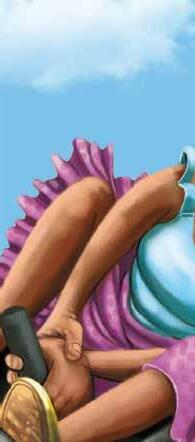

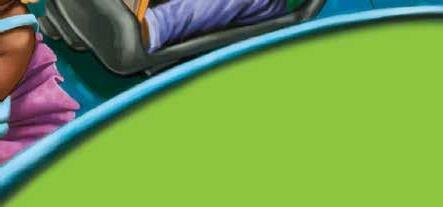



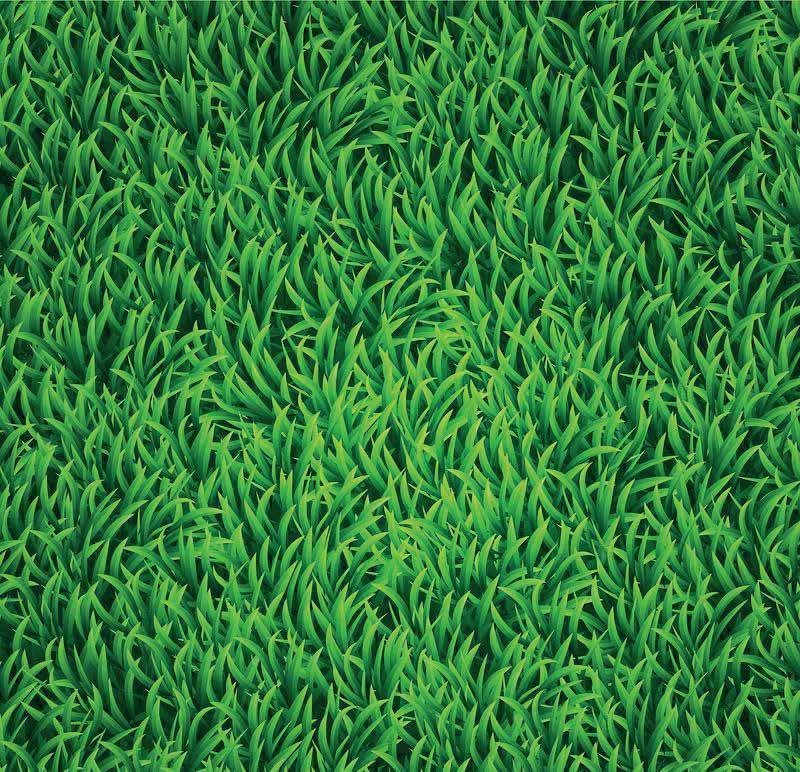




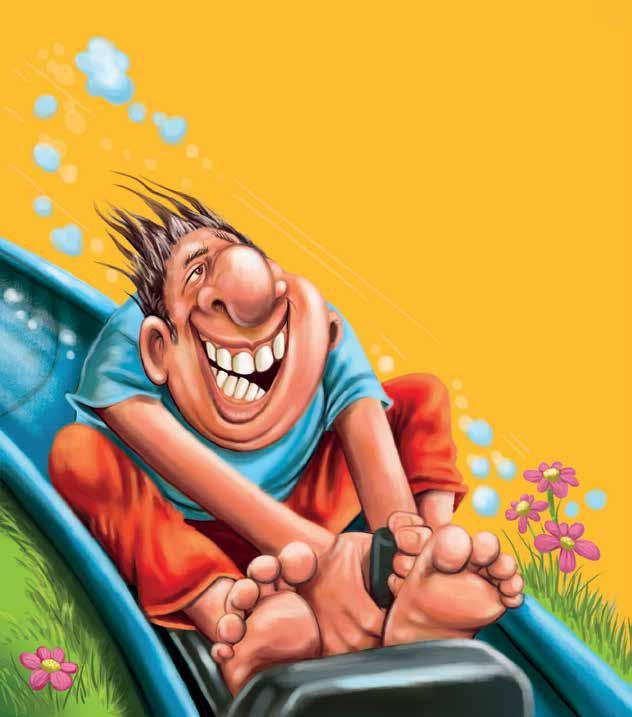
BIGGER ISSUES




Gum disease can lead to much g








um disease is the second biggest oral health problem in the country, according to the World Health Organization and the South African Dental Association. Unfortunately, if not treated, gum disease has serious consequences. What starts as mild, reversible gingivitis can become periodontitis and permanently damage the gums. It is also linked to several chronic health conditions. “Untreated gum disease causes bone and tooth loss. It has also been associated with systemic diseases, including cardiovascular disease, high blood pressure, diabetes, and poor pregnancy outcomes,” says Dr Corlene Schnetler of Cape Periodontal Specialists.
Because gum disease is usually painless, especially in the early stages, most people don’t realise they have it.
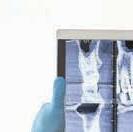



“Unless you’re a dental professional, it’s not that easy to tell the difference between healthy pink gums and red, inflamed gums,” says Ivohealth’s oral hygiene advisor, Dirna Grobbelaar. “One of the most noticeable signs are bleeding gums – if you see red when brushing or cleaning between the teeth, it is most likely a sign of gum disease.”
GOOD ORAL CARE
m disease an have an adverse effe t on o r overall health ith the mouth seen as the main entry point to the rest of the body, there have been n mero s ndings that there are strong lin s bet een severe forms of g m disease and health roblems s h as diabetes, heart disease, stro e, and even premat re birth and lo birth eight babies, sa s ole ilbert from the ral gienists sso iation of





“The best preventative methods for gum disease remain self-care oral practice, which involves brushing twice daily with a soft toothbr sh, ossing dail , and ma ing se of an appropriate mouthwash that aids the reduction of bacteria found in plaque, hen e preventing in ammation of the g ms, sa s ilbert


He adds: “It is also recommended to visit your oral hygienist ever six months for a professional dental leaning ho ld you be more prone to gum disease or diagnosed with health problems that ma e o more prone to g m disease, the intervals bet een oral h giene visits sho ld be three to fo r months elinda an der er e, pra ti e manager at dental pra ti e ove mile, adds “In the case of progressive periodontal disease, specialist treatment by a periodontist might be needed n severe tooth mobilit , the onl option might be extra tion n this ase, alternatives to repla e the lost tooth or teeth need to be onsidered

GUM DISEASE IS PREVENTABLE
t’s orth remembering that, in most ases, g m disease an be avoided revention is al a s better than re from a medi al and ost perspe tive, sa s r hnetler f o follow a consistent oral hygiene routine, with the correct tools and techniques, gum disease an s all be prevented ating a health diet and not smo ing also pla an important role in eeping the g ms health m disease an be treated at home if a ght earl f o noti e some bleeding hen o br sh or oss, o an tr and resolve the problem b follo ing a meti lo s oral h giene ro tine for a ee a e extra spe ial are of o r mo th r sh orre tl t i e a da ith a soft bristled br sh, ideall sing an antiba terial toothpaste li e aroex ntensive tion lean bet een the teeth dail , sing hatever interdental tool o nd easiest oss, an interdental br sh ith antiba terial bristles or even oft i s, advises robbelaar fter
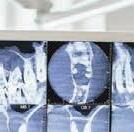
20 l HEALTHY TIMES ORAL HYGIENE
Cole Gilbert
Itumeleng Mogaki asked the experts to share what you need to know about gum disease
eating and before bed, rinse with salt water or an antibacterial mouth rinse such as GUM Paroex, which contains chlorhexidine and CPC, the gold standard in plaque control.”
If your gums continue to bleed after seven days, it’s time to see your dentist or oral h gienist f pla e isn’t ompletel removed ith reg lar br shing and ossing, it hardens into tartar. Tartar can’t be removed with regular oral care and will continue to irritate the gums unless it is removed professionally,” Grobbelaar explains
If caught in the early stages, a professional scale and polish may be enough to sort out your bleeding gums. Your dentist will advise if further treatment is required and will refer you to a periodontist if necessary.
“The best preventative methods for gum disease remain self-care oral practice, which involves brushing twice daily with a soft toothbrush, flossing daily, and making use of an appropriate mouthwash.”
– Cole Gilbert



BAD BREATH IS NOT ALWAYS A TELL-TALE SIGN

Belinda Van der Merwe, practice manager at dental practice I Love My Smile, says gum disease can result in bad breath, but it is not always the case.
“You can have gum disease and not notice bad breath. When addressing bad breath it is al ays good to start by addressing dental hygiene first but sometimes referral to an ear, nose and throat specialist may be necessary to get to the root of the problem,” she says.
PROBIOTICS FOR ORAL HEALTH?
Wellness doctor and integrative health practitioner Dr James Liddell says that probiotics can help repopulate the mouth with healthy bacteria, which can reduce bad breath, cavities and periodontal disease.

Olga Niemkiewicz, founder and managing director of Olgani, the producers of the Probiom toothcare range, says: “It is well-documented that your microbiota in uences the entire body s functioning Micro-organisms in your mouth are directly connected to your gut. It makes sense to try to balance and support oral microbiota in support of complete wellness.
“We selected the ingredients in Probiom to fortify and nourish the microbiota in the mouth. Prebiotics and probiotics help to increase the number of friendly bacteria. Herbal extracts and mineral clays support healthy gum tissue and provide vital minerals to support the remineralisation of enamel and to protect dentine.”

The nourishing ingredients in Olgani Probiom include detoxifying bentonite, nutrient-rich chlorella, French green clay, green tea, antibacterial antio idant and anti-in ammatory lemongrass and refreshing peppermint Probiom does not contain uoride sodium lauryl sulphate or other foaming agents, glycerine, sorbitol or s eeteners titanium dio ide or any artificial preservatives taste enhancers or additives.

Weight and DENTAL HEALTH
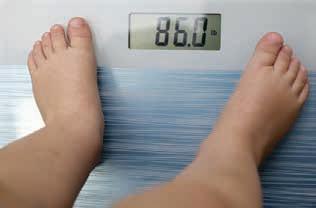
Murray Hewlett of ffinity ealth and doctoral candidate at the University of Liverpool, shares how being overweight can have negative effects on children s teeth and gums
Oral health and obesity overlap risk factors. Both are connected with bad dietary behaviours, such as consuming sugary soft drinks and snacks and sugar-rich diets.
So, it is essential to adopt a combined approach to promote general and oral health. The transition from childhood to adolescence is a crucial period of life. Adolescents learn essential health-related behavioural habits. Childhood food habits that are unhealthy transition into adulthood.
The last decade has seen an increase in the consumption of sugar, which worsens dental health and raises body mass index (BMI).
THE ROLE OF DENTISTS
Dentists are in a unique position when it comes to managing childhood obesity. Their insights can provide parents with many options for improving their child’s health.
Dentists can provide a variety of remedies. They address concerns and assist with modifying and transforming lifestyle habits. These many options may include:
• dentifying increased risks. entists cannot diagnose diseases outside of oral health. But they can identify the increased risk of certain conditions.
• iscussing diet and advice. iet plays a large role in oral health, so your child’s dentist can tell you which foods children should avoid.
• Extend medical collaboration. besity cannot be solved by a single professional. Dentists can work with other healthcare team members to improve their patient’s health.
HEALTHY TIMES l 21 Images: iStock.com/Prostock-Studio, istock.com/ Taborsk, Portrait image: supplied
“Probiotics can help repopulate the mouth with healthy bacteria, which can reduce bad breath, cavities and periodontal disease.”
– Dr James Liddell
Murray Hewlett
Choosing the correct N
it is never a clever idea to purchase just any pair of sunglasses, says Vision Works national marketing manager Karin Human. Why? Because, she says, inferior quality lenses or badly fitted sunglasses lack the necessary UV-blocking capabilities to fully protect your eyes.





“This increases the amount of harmful solar radiation your eyes are exposed to, leaving you susceptible to developing eye conditions,” says Human.









GET YOUR VISION ASSESSED



“We suggest visiting an optometrist to have a comprehensive vision and eye health assessment done to nd the perfe t frame to t o r fa e shape and other needs, sa s man ven if o have vision, it’s important to ear s nglasses to ens re the prote tion and maintenan e of o r e esight rends are f n to plift o r mood and o t t, ho ever, if o ’re loo ing for a st le that o ld o tlast the ears, go for timeless frames s h as aviators and ovender, mar eting dire tor at ptometri sso iation, sa s f a pres ription for distan e vision is ne essar , this m st be in orporated into the s nglasses ar tints de rease the antit of visible light passing thro gh the lens f a vis all impaired person p r hases an off the shelf pair of s nglasses, their vision o ld be more severel impaired be a se of the la of a f ll pres ription in the lenses







WHAT SUITS YOUR FACE?
and ovender, mar eting dire tor at ptometri sso iation, shares the different fa e shapes and brie explains hi h s nglasses are s itable for hi h fa e Round: his fa e shape is rved and has no de nite angles nglasses sho ld have sharp ang lar lines to help ma e the fa e loo longer, thinner and sharper
Square: his fa e shape has the same length and idth nglasses sho ld have a ro nd or oval shape he rves balan e o t the ang lar fa e shape t les that or ell here are aviators, b tter ies, ro nd, and ats’ e es
Oval: ost s nglass shapes loo good on an oval fa e hoose shapes that over the e ebro s to the hee bones f too big, it an obs re the s mmetr of a perfe tl oval fa e
Rectangular: arger s nglass shapes or ell on a re tang lar fa e arge a farer st les and thi rimmed frames an ma e a long fa e loo ider intage st le s nglasses ith ang lar designs an sharpen soft feat res void small frames
Diamond: his fa e shape has a narro hin and ide hee bones val and rimless st le s nglasses an or ell here he st le hosen sho ld not be ider than the hee bones



Heart: his fa e shape is ide at the temples b t narro at the hin hield, b tter , aviator, or rimless st les bene t these earers
Eye care healthWHAT YOU NEED TO KNOW
QUESTIONS TO ASK YOUR EYECARE SPECIALIST
1. What tests will you perform? Eye exams go beyond the basic Snellen Chart vision test. It helps the optometrist to know your eye issues in advance. That way, they can dedicate extra time and attention to your condition.

2. What do my symptoms mean? Are you having problems with your eyesight? Are you worried about how your eyes look or feel? Pay attention to the following dangerous symptoms: lashes of light alos edness ight sensitivity and ye pain
3. How can I keep track of and preserve my eye health? Ask your specialist about ways to improve your eye health. The answer will differ based on your circumstances and eye condition(s).
If your eyes are in good condition, your specialist will most likely only recommend annual checks and precautionary steps. If you have an issue, they are likely to recommend: cute or over-the-counter medication orrective spectacles or lenses ifestyle modifications and ore fre uent appointments
Source: Murray Hewlett, Affinity Health
DID YOU KNOW?
Seventy-five per cent of blindness cases
preventable through early detection and treatment.
Source: Affinity Health
are
22 l EYE CARE
We may take it for granted, but choosing the correct sunglasses that fit the shape of our faces is essential, writes Itumeleng Mogaki
Sandy Govender
Karin Human
Images: iStock.com/Liudmila Chernetska, istock.com/ Casper1774Studio, Portrait images: supplied
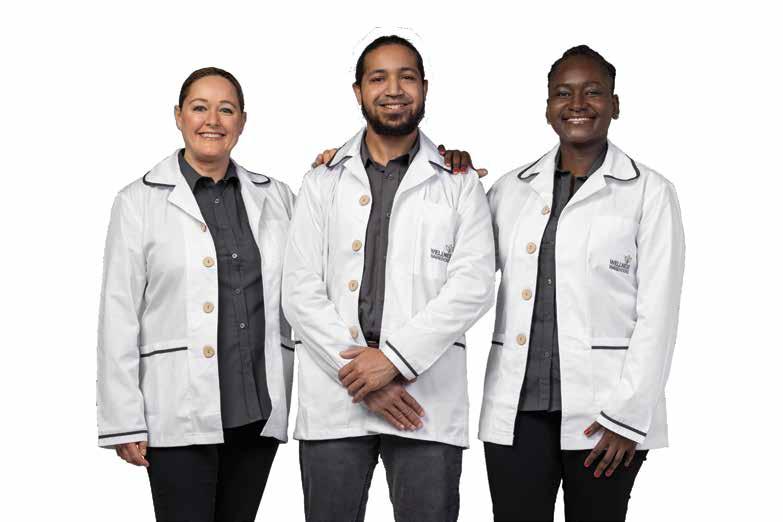

Immune Support Stress Management Gut Health Sleep Hygiene Clean Fitness Healthy Hormones and more!
At Wellness Warehouse, we understand that there is no one-size-fits-all approach to health and wellbeing. That’s why we want to learn your unique needs so that we can help to empower your personal journey to holistic natural wellbeing.
Warehouse Consultants
to chat to a Consultant online, from the comfort of your home? SCAN THE QR CODE TO BOOK YOUR COMPLIMENTARY 20-MINUTE ONLINE CONSULT! www.wellnesswarehouse.com
Chat to one of our expert in-store Wellness
about your health today! Prefer
MOVING Get
Caryn Gootkin goes in search of some expert fitness advice to help get you in shape for summer and all year round
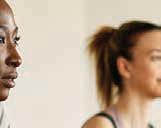

crash diets are not the answer! Not only are they not sustainable, but the American Association of Family Physicians has found that the loss shown by the scale is more likely to reflect the loss of lean muscle and water rather than body fat. “The objective of any healthy fitness plan is consistency and sustained behaviour change in diet, exercise habits and/or work-life balance,” says sports doctor Dr Shuaib Manjra.
Any eating plan should be balanced and include all food groups. “Excluding food groups will create deficiencies in vitamins and micronutrients,” says Dr Manjra. “Be mindful of portion control as large quantities of even healthy food will result in excess calories, which causes weight gain. It’s also vital to stay properly hydrated without adding calories. To lose weight, dietary considerations are paramount. As they say, you cannot outrun a bad diet.”


But exercise is important for overall health and can help with weight loss. Experts recommend a combination of exercise forms for optimal health benefits.

DR MANJRA’S TOP EXERCISE TIPS
r huaib an ra

1. Aerobic or endurance types of exercise are always a good start – walking, running, cycling, or rowing are all good examples. Start slow, and increase distance or intensity by not more than 10 per cent to prevent injuries or the negative effects of overtraining. Aerobic exercise is a good way to lose or maintain weight. Walking, running or cycling in forests or on mountains keeps it more interesting, hile giving o the added stress release bene ts of being in nat re








2. Resistance training aims to build or maintain muscle mass and also plays an important role in weight maintenance, balance, injury prevention and strength. Four sessions per week of aerobic exercise and two sessions of strength training are recommended. If you feel you need a rest, listen to your body rather than your schedule.




3. Flexibility training is important and exercises such as yoga build strength and exibilit
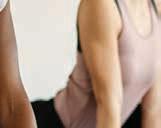



4. For the more ambitious, young, and healthy, plyometrics and power training are good a s to eep t and enth siasti
A word of caution: avoid injury. “The biggest cause of injuries is doing too much, too soon, at too high an intensity,” says Dr Manjra.
THE HEALTH BENEFITS OF CYCLING ycling is beneficial for many reasons but its greatest advantage is that it combines aerobic e ercise ith elements of strength training ithout being a eight-bearing e ercise says sports doctor r huaib an ra unning alking dancing or aerobics all re uire you to bear your o n eight hich can put stress on your oints and muscles ycling is a gentler form of e ercise but one that gives you a significant orkout utdoor cycling also enables the development of good balance hich is hy it is such an important skill for children to learn ut for those ho do not ant to venture out on the road or have balance issues e ercising on a stationary bike is a good alternative ost gyms also offer spinning classes on specifically tailored bikes these are a fantastic ay to ork out these classes challenge your endurance build speed and modulate
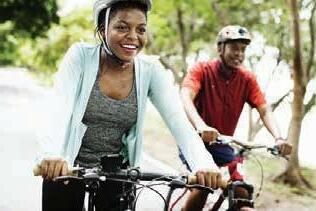
24 l HEALTHY TIMES FITNESS
different forms of cycling,” says Dr Manjra. “Working out in a group, with interesting music and a dynamic leader takes your mind off how hard you are working, which enables you to complete higher intensity workouts.”
Similarly, out on the road, you can cover far greater distances on a bike than if you were running or walking. “A quicker form of exercise than running, cycling enables you to exercise for longer and cover longer distances while enjoying the changing scenery along your chosen route,” says Dr Manjra.
Cycling is also excellent for stress release. “Apart from the release of endorphins, which help lower stress levels and improve mood, mountain biking has the added benefits of more interesting terrain and being immersed in nature,” says Dr Manjra. “For the less adventurous, trail biking allows you to ride on protected jeep tracks, eliminating the risk of falls or the intensity of mountain biking.”
For those daunted by hills and long distances, e-bikes offer a perfect combination of exercise and joyfulness because you can activate the electric component when you get tired of pedalling.
Stationary bikes for home use permit safe riding in all weather conditions. “To eliminate boredom, listen to podcasts, watch television or read while cycling,” says Dr Manjra. “For the more active, sophisticated trainers permit you to experience different routes and terrains around the world.”
S ome athletes now prefer shoes that approximate barefoot running, and there are numerous options available. “Bear in mind that older runners may risk injury if they suddenly switch to these models as their muscles and joints have become accustomed to different biomechanics,” says Dr Manjra.
The brand should be your last consideration. “However, once you get accustomed to a particular brand or model, stick with it,” says Dr Manjra. “I ran my first races in a pair of Nike Pegasus and it remains my all-time favourite shoe. Unfortunately, manufacturers change models frequently and older models drop off, so look for a newer model that best encapsulates the things you liked about the old model.”
THE RIGHT FIT
Buying a running shoe can be a daunting experience because there are so many to choose from: a plethora of brands, each with several different models. S o, before you head for the shops, make sure you know what you want to use the shoe for – jogging short distances at slow paces, running your first 10km, training for a marathon, or competitive sprinting. “ The right shoes prevent injury, provide comfort, and enhance performance,” says Dr S huaib M anjra, a sports doctor.
Determine your budget. “ S hoes can cost from a few hundred rands to thousands of rands,” says Dr M anjra. “Knowing what you want the shoe for and what your budget is will define the shoe you need and narrow down your options.

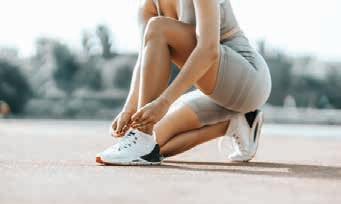
The next considerations are your weight and foot configuration. Do you need a shoe that effectively absorbs shock or one that provides some form of foot stability to prevent injuries? “ There’s a multitude of antipronation or stability shoes for those whose natural gait rolls too far inwards, and cushioned shoes for those whose feet tend to roll too far outwards,” says Dr M anjra. “A lso some shoes are available in different widths to accommodate different foot shapes.”
Consider the terrain you will run on. “ Trail shoes provide greater protection and stability than road shoes or track shoes, and some are even water-resistant,” he says.
HEALTHY SNACKING
Healthy snacks could sound unpalatable and dull if you’re a grazing teen bored on day one of your summer vacation, but our expert disagrees, writes Sue-Ellen Donough
Sunette Swart, a dietician with over 28 years of experience in nutritional assessment and proper nutritional practices, shares that a healthy snack is a very wide term , but suggests the following when filling your snack basket:
• uy low-fat ingredients and prepare food in a low-fat way
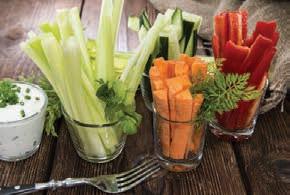
• Ensure that snacks are high-fibre include fruit and veggies daily
• uy products with a low glycaemic index
• nclude variety
• uy natural and less processed foods.
Swart advises that water will always be the best option when it comes to drinking. ou can add some healthy flavour by adding slices of fruit, vegetables and herbs to your water. aving a glass of per cent fruit juice isn’t a complete no-no because even though natural sugar is sugar, per cent fruit juices are quite healthy if you watch how much you drink.
FAST FACT:
“The best way to manage snack cravings is to eat regularly and add protein to your snacks to control your blood sugar and, of course, drink sufficient water.” – S unette S wart
HEALTHY TIMES l 25 Images: iStock.com/ dusanpetkovic, istock.com/ Rawpixel, istock.com/ Handmade, Pictures, Portrait image: supplied
“The right shoes prevent injury, provide comfort, and enhance performance.”
– Dr Shuaib Manjra
Sunette Swart
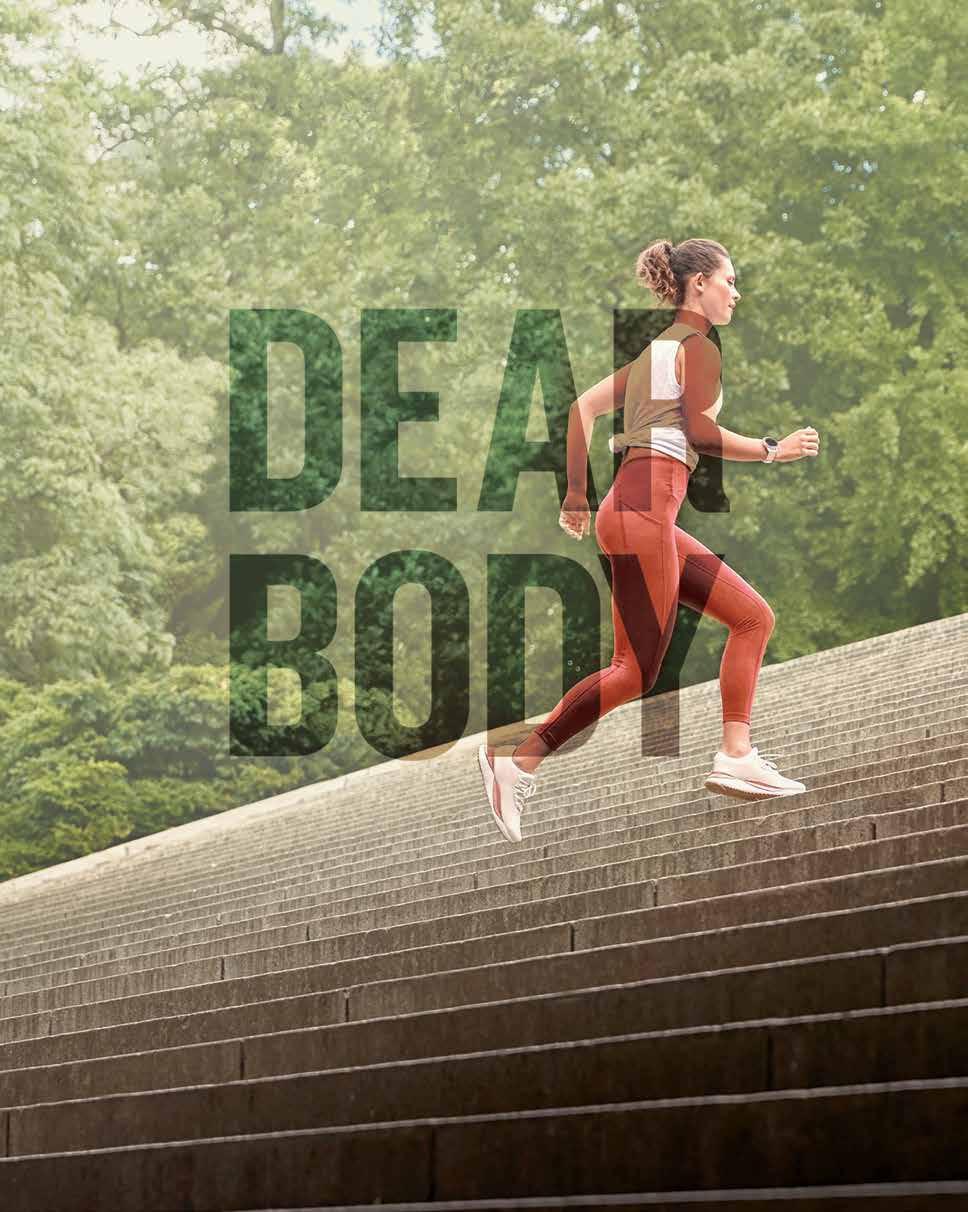
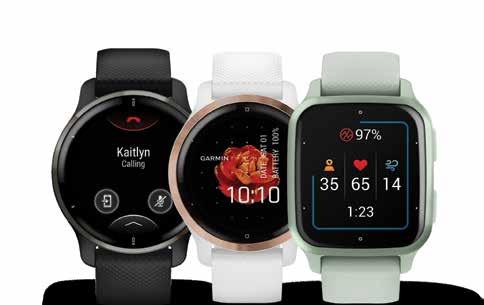
FROM NOW ON, HEALTH IS OUR PRIORITY © 2022 Garmin Ltd. or its subsidiaries. HEALTH AND WELLNESS FEATURES 25+ SPORTS APPS FREE WORKOUTS VENU® SERIES SMARTWATCHES
Garmin enduro 2
SMARTWATCH
If you’re into endurance events, then the Garmin Enduro 2 smartwatch is probably designed just for you

WHAT IS IT? It’s been fashioned as an ultra-performance multisport GPS smartwatch, purpose-built for endurance athletes.
WHY YOU NEED IT? It really is built for the extremes with a titanium bezel and rear case, 1.4” Power Sapphire™ lens, ultra-fit nylon band for a secure and comfortable fit, and a new touchscreen interface that complements Garmin’s traditional button controls.
WHAT MAKES IT STAND OUT? It’s lightweight and includes built-in TopoActive maps with multicontinent coverage, a super-bright LED flashlight, and Garmin’s exclusive SatIQ™ technology to help optimise battery performance.
During the day, Enduro 2 harnesses the sun’s energy to provide a battery life of up to 150 hours in GPS mode and up to 46 days in smartwatch mode. Endurance athletes can keep trailblazing with confidence long after the sun sets, thanks to a new dimmable LED flashlight. Enduro 2 contains Garmin’s brightest flashlight to date. Twice as bright as fēnix 7X’s flashlight, it provides an optional strobe mode to match a runner’s cadence or a red safety light mode that allows users to see and be seen.
FEATURES
• NextFork™ map guide shows the distance to the next trail intersection.
• Grade-adjusted pace helps runners to pace themselves over varying terrain by displaying what an equivalent running pace would be on flat ground, allowing users to adjust their pace and maintain stamina throughout a race.
• Visual race predictor provides a pacing estimate for upcoming runs based on running history and overall fitness level.


• Automatic rest timer logs breaks during ultra-running races.
• ARWS-approved adventure racing activity profile tracks heart rate, elevation, segment times, and other metrics when the race is on and saves the data for post-race viewing in accordance with adventure race rules.
• While in between activities, users can take advantage of Garmin Pay™ contactless payments and receive smart notifications for calls, texts, calendar reminders, social media updates, breaking news stories and more when paired with a compatible Android™ or Apple® smartphone.
• When paired with a smartphone, Enduro 2 can send a message with a user’s live location to their contacts manually or automatically.
ADVERTORIAL











































festive Summer! HAPPY, HEALTHY, Be sun safe | Beat holiday bugs | Celebrate and stay in good shape! HOW TO SPOT ‘HOLIDAY BLUES’ Festive beauty secrets from the #ClicksBeautySquad Top baby travel tips Scan to read the full Clicks Festive Wellness Guide!
















































































































































































































































































































































































































